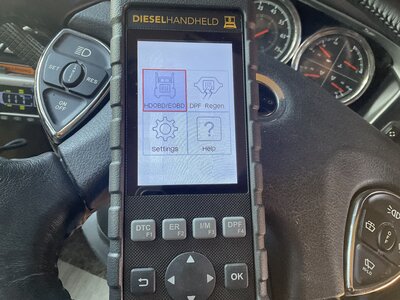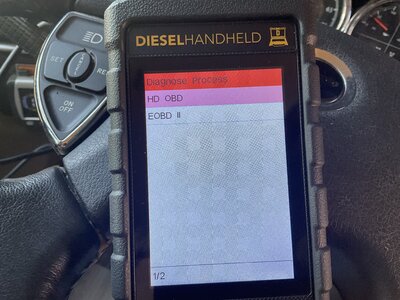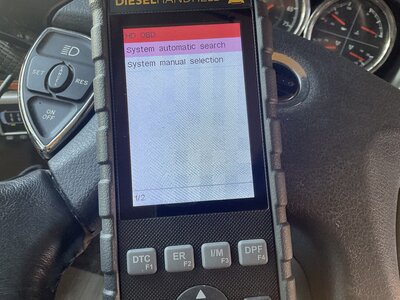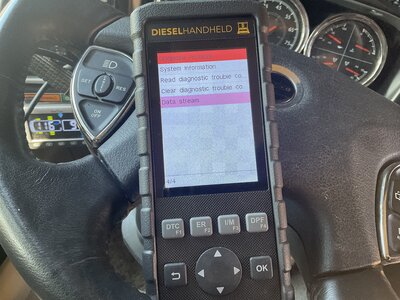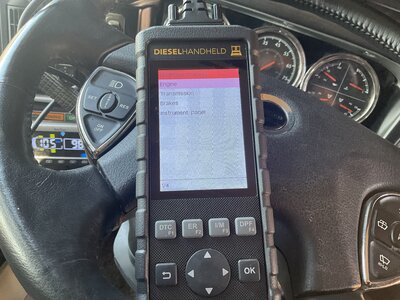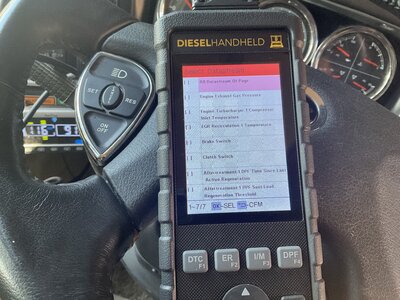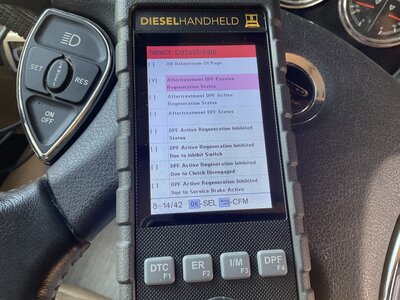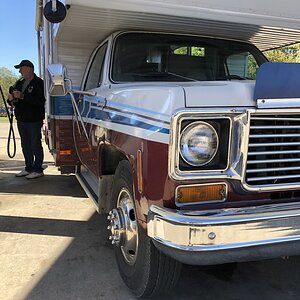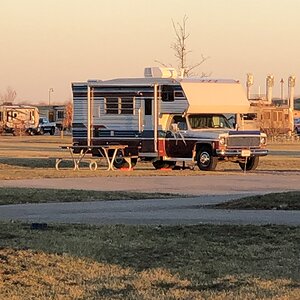- Joined
- Jul 27, 2019
- Messages
- 12,374
- Location
- Midlothian, VA
- RV Year
- 2017
- RV Make
- Newmar
- RV Model
- Ventana 4037
- RV Length
- 40' 10"
- Chassis
- Freightliner XCR
- Engine
- Cummins 400 HP
- TOW/TOAD
- 2017 Chevy Colorado
- Fulltimer
- No
During this last trip which just ended I wanted to monitor the DPF soot level. I was afraid to touch anything so I waited until I got home and today put the coach in storage and fired up my Diesel Laptops Handheld scan tool. I updated it just prior to leaving a month ago, for those that have them be sure to check for updates.
Once I got the right 9-pin connector attached, amazing how several look so close to one another I started looking at the information. I don't recall viewing a datastream area last time I used this so this screenshot is interesting. What I wasn't sure was how to get the DPF soot level as when I went to the DPF Regen area I got as far as an Actuator Test and I didn't want to go into that. Anyone recall how to view the soot level which I believe we've seen shown at 200% and the steps to get there?

Once I got the right 9-pin connector attached, amazing how several look so close to one another I started looking at the information. I don't recall viewing a datastream area last time I used this so this screenshot is interesting. What I wasn't sure was how to get the DPF soot level as when I went to the DPF Regen area I got as far as an Actuator Test and I didn't want to go into that. Anyone recall how to view the soot level which I believe we've seen shown at 200% and the steps to get there?
